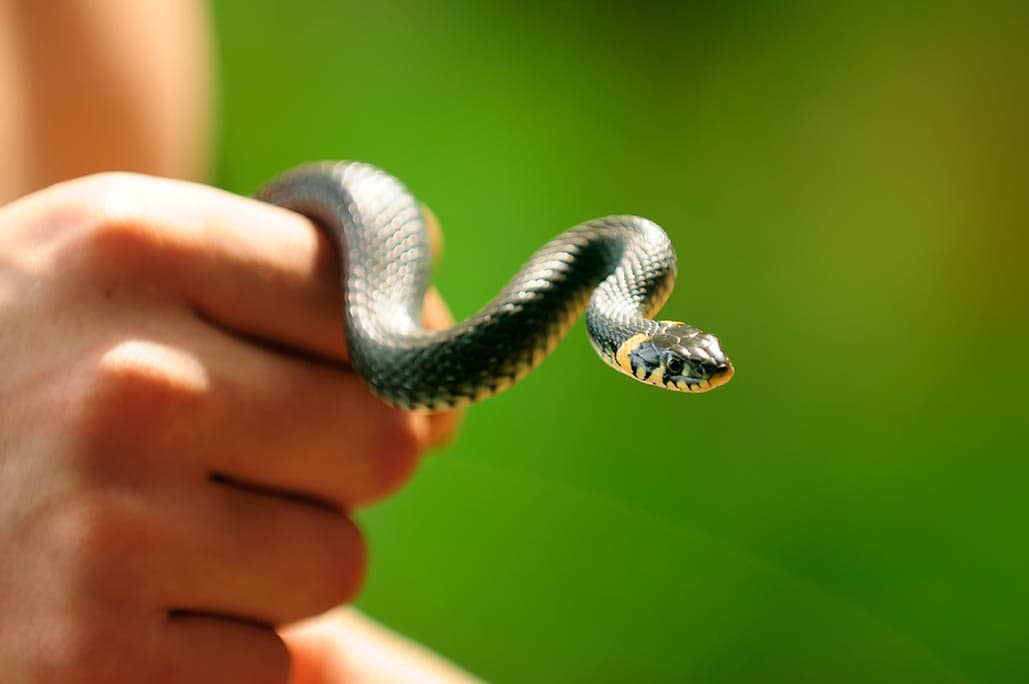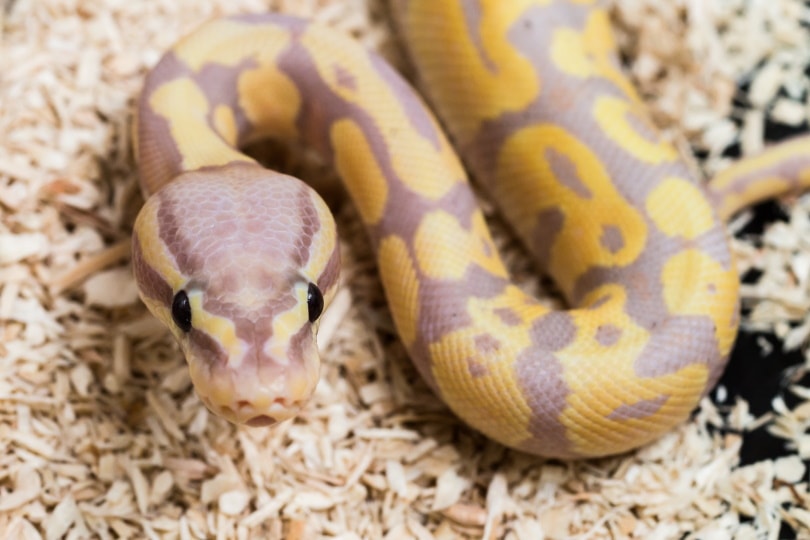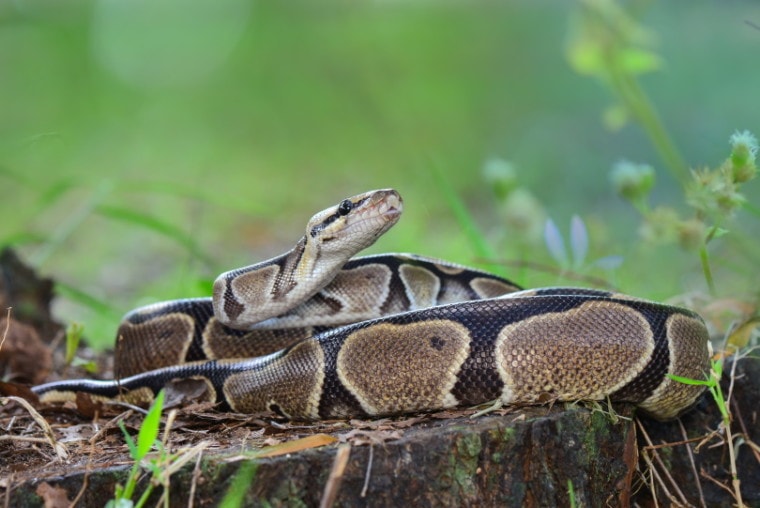
If you have a ball python, you may be wondering just how many teeth your snake has. You may be surprised to learn that these snakes have more than 100 teeth in total, with two rows in their lower jaw and four rows in their upper jaw. In this article, we will discuss the ball python in more detail. Keep reading to find out more about these popular snakes.
Do Ball Pythons Have Fangs?
The ball python is not a venomous snake; therefore, it does not have fangs. They are constrictor snakes, which means they use their bodies to suffocate their prey instead of using poisonous venom. If you’re wondering whether your ball python can harm you, you probably don’t have anything to be worried about. While there are constrictor species, such as the boa constrictor, that are large enough to harm or kill a person, the ball python is generally considered to be too small to pose a threat to adult humans. Like other snake species, the ball python does not chew its prey but swallows it whole. Their teeth are curved and sharp, which helps them to keep their prey secure during the constricting process.
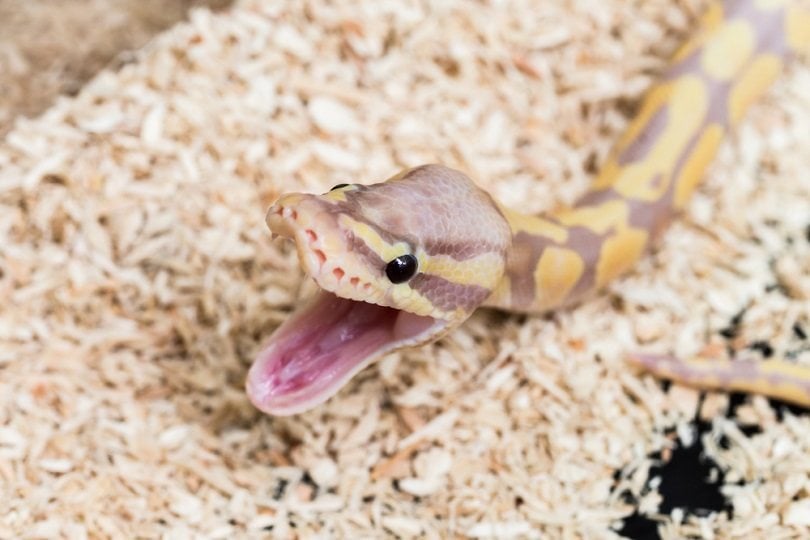
What Do Ball Pythons Eat?
Ball pythons are carnivores, which means they eat exclusively meat. Though their heads are relatively small, they have the ability to expand their jaws to be able to eat prey that is twice as big as their heads. In the wild, they typically eat rodents such as mice and rats, birds, and other small mammals. In captivity, most ball python owners offer their snakes live or pre-killed rodents.
In order to determine which prey is appropriately sized for your snake, consider your snake’s size. A general rule of thumb is that you should not offer your ball python any prey that is larger than the widest part of its body.
Unlike humans, ball pythons do not need to eat every day. Depending on its age, a ball python can eat anywhere from once a week to once every 2 weeks. If you notice that your snake seems disinterested in food, try feeding it a little bit less frequently to see if that makes a difference.
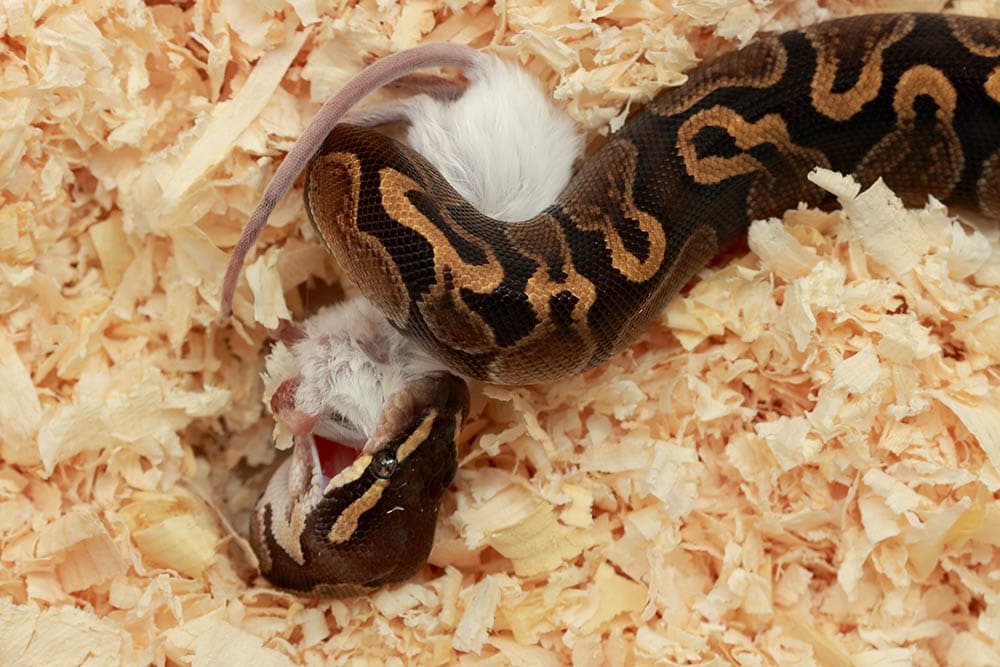
What To Do If Your Ball Python Bites You
Because the ball python’s bite isn’t poisonous, the occasional bite from your snake does not usually constitute a medical emergency. Still, being bitten is an unpleasant experience and there are some cases where you will want to get medical attention. However, in the majority of cases, you can simply clean up the bite area using the following steps:
Keep in mind that many snakes, like the ball python, are harmless. However, there are certain species of snake that are poisonous. If you believe you or someone you know has been bitten by a poisonous snake, you should not delay in getting medical help.
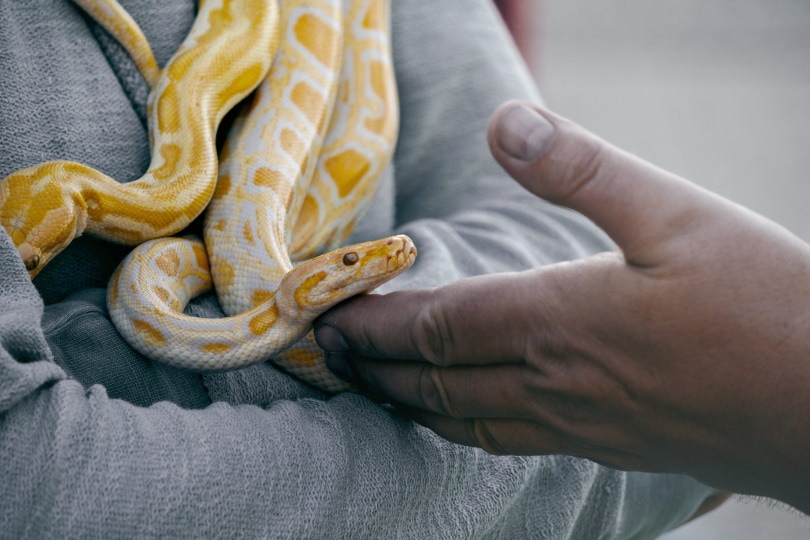
Final Thoughts
The ball python has dozens of teeth that help it hold onto its prey during constricting, but they are not meant for chewing. If you are a ball python owner, be sure to only feed your snake prey that it can comfortably swallow.
Featured Image Credit: DWI YULIANTO, Shutterstock


